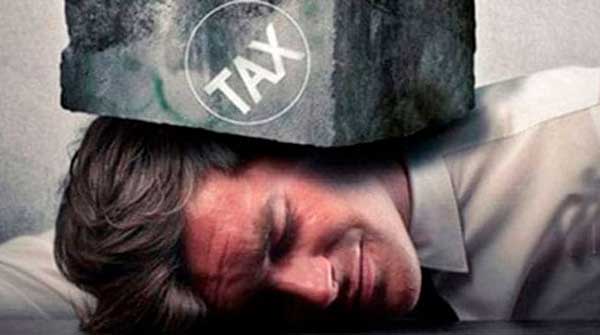Slashing the provincial sales tax (PST) by one point would save a Saskatchewan family of four $450 a year
 Saskatchewan Premier Scott Moe needs to make life more affordable.
Saskatchewan Premier Scott Moe needs to make life more affordable.
And there is a simple, non-bureaucratic way to do it: slash the provincial sales tax (PST) by one point from six to five percent.
It doesn’t require sending cheques to taxpayers, meddling with income tax rates or creating convoluted tax credits that only help a few people. Not one pencil-pusher in Regina needs to stay late to make this happen.
And a PST cut means big savings for taxpayers.
It’s back-to-school time, and that puts extra stress on family budgets. Around the province, families have been loading up the minivan and heading to Saskatoon or Regina to fill up shopping carts with pencil crayons, notebooks, backpacks, some new clothes and maybe a laptop or a phone. After that, they headed to a nearby restaurant to fill the kids’ stomachs before hitting the road back home.
 |
| Related Stories |
| Scott Moe’s legacy is marked by political bravado and controversy
|
| Saskatchewan’s fake surplus
|
| Moe calls out Trudeau’s budget debt, but his own is even worse
|
All those things cost a lot. And they cost even more because the provincial government charges a six percent PST on those purchases.
A two-income family earning average wages in Saskatchewan can expect to pay about $2,700 yearly in PST. Cutting the PST by one point would save about $450 a year. Now, that’s a significant amount of money. It could pay for all that back-to-school shopping for one kid, a big trip to the grocery store, or a few tanks of gas.
A PST cut has benefits for businesses, too. Cutting the PST makes it a little bit easier for a family to decide to stay in Saskatoon or Regina for their back-to-school shopping instead of heading to Medicine Hat to save on taxes.
But recent history has shown that the government is doing everything it can to make Saskatchewanians pay more PST. In 2017, the government raised the PST from five to six percent and removed exemptions for used cars, restaurant meals and children’s clothes. In 2022, Moe went even further and started charging the PST on event tickets throughout the province.
Cutting the PST now would show the government it wants to make things right and help taxpayers keep more of their own money.
The government can’t cry fiscal foul either. The government can afford a PST cut with only a tiny amount of fiscal discipline. Because right now, the government isn’t even trying to control spending.
Out of the 11 main areas of spending in the budget, the government is spending more in all but one this year. Government spending is going up almost eight times more than revenue this year.
The government needs to find places to trim the fat of its budget. Luckily, the government has a lot of options.
First off, it can stop wasting money on the small stuff, like spending $70,000 of taxpayers’ money to advertise its own budget.
Corporate welfare is another good place to start. Since 2007, the Saskatchewan government has spent an average of $900 million per year on corporate welfare, according to the Fraser Institute. Slashing these handouts would be enough money to cut the PST by a point and eliminate the deficit. Plus, studies show that subsidies are unlikely to help grow the economy or create jobs.
Looking to its neighbours, the government of Saskatchewan is also spending more per person than any other province in Western Canada. That includes the NDP governments of both Manitoba and British Columbia.
If the government cut its spending to Alberta’s per-person level, our best-performing neighbour, Saskatchewan would have a $1.2 billion surplus instead of the current deficit. The government can use that money to cut the PST and pay down some debt to boot.
The government has options to provide tax relief and balance the budget.
Moe can afford to cut the PST. He just needs to keep a lid on spending.
Gage Haubrich is the Prairie Director for the Canadian Taxpayers Federation.
For interview requests, click here.
The opinions expressed by our columnists and contributors are theirs alone and do not inherently or expressly reflect the views of our publication.
© Troy Media
Troy Media is an editorial content provider to media outlets and its own hosted community news outlets across Canada.


